
In a series of essays after "the origin of iron ore (April 2003)" and "the origin of oxygen (May 2003)", let me introduce another closely correlated element, carbon dioxide.
|
What kind of scenery conjures up in your mind when you hear "Great
history of China"? Is it something like a Chinese-styled landscape painting
with a great river running in between strange rock mountains, with some
small fishing boats floating on misty water surface? You can find such
a scenery in the real world if you visit Shilin or Guilin in China.
Also, much smaller scale of such a landscape can be found in many other
places in the world. The main ingredient of limestone is a mineral called calcite. Calcite is made of calcium carbonate (a chemical formula is CaCO3). The organism used hard calcium carbonate as shell or bone (in the case of coral, it is an outside frame). The material is the carbonic acid ion and calcium ion in seawater. Carbon dioxide in air dissolves in seawater and taken in by organisms and turns into shells and bones. Thus, quite a huge volume of carbon dioxide gas is required to form even a small piece of solid substance. The fact is easily understood from a scientific experiment that carbon
dioxide gas bubbles out fiercely by pouring hydrochloric acid over a
piece of limestone. 1st June 2003 |
|
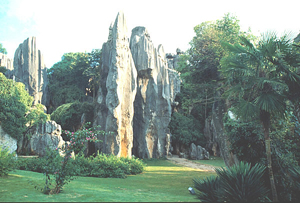 |
Sharp edges of thin and tall strange rocks shoot up toward the air. The strange appearance was formed by the act of rain and/or rivers. In the large karst of 350 square kilometers, Shilin Scenic Area 44 square kilometers exists. Nearly all of the area (43.9 square kilometers) has become a sightseeing spot with Stone Forests and lakes. |
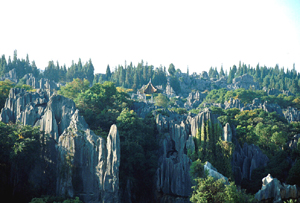 |
Limestone rocks in Shilin was formed approximately 270 million years ago at the sea bottom. The rocks were pushed above ground due to the collision of Indian Continent and Eurasia Continent (Himalaya mountain making) started 4 million years ago, then moved to the present location approximately 2 million years ago. The present steepletop shaped cluster of strange rocks were formed from 200,000 to 10,000years ago by the erosion due to rains and rivers. |
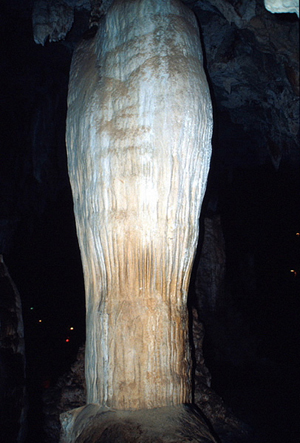 |
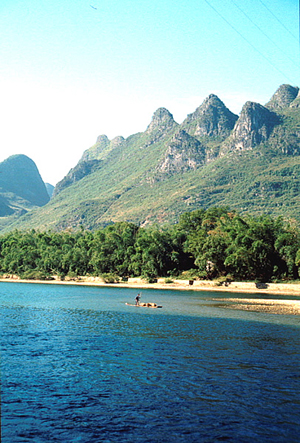 |
|
|
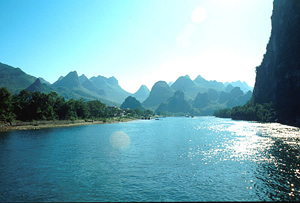 |
Beautiful scenery of Guilin, renowned worldwide is in fact made of limestone rocks. In Paleozoic (400 ~ 350million years ago), the rocks precipitated in sea bottom and rose above water due to upheavals in Jurassic (approx. 180million years ago). The present landscape had been formed by erosion since then.
|
Copyright of Image - 1 through 3 belongs to JSS and text and Picture - 1 through 5 belongs to Prof. Yoshiyuki Koide of Sapporo Gakuin University. Permission of JSS is needed to their use for other purposes.